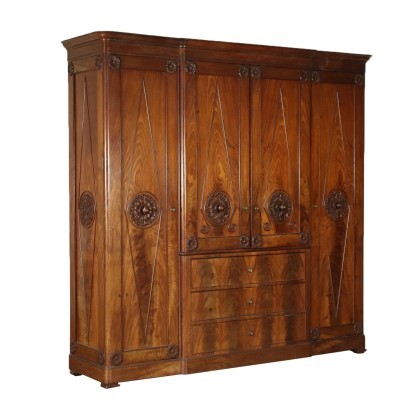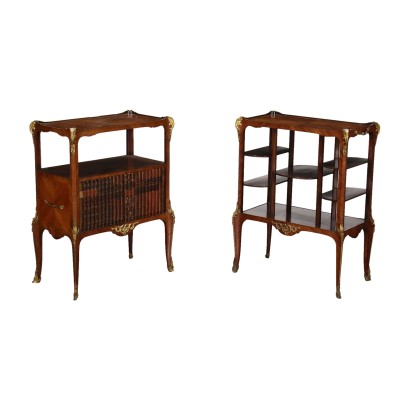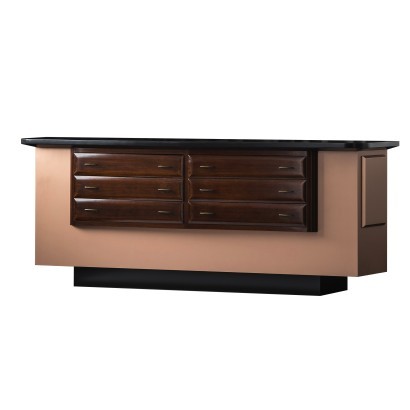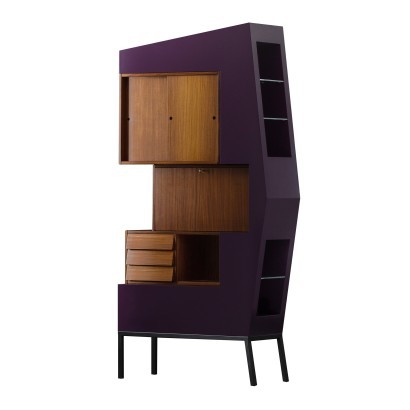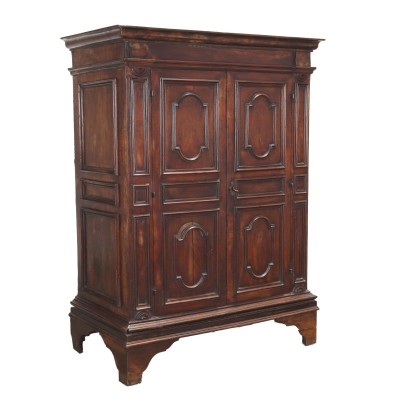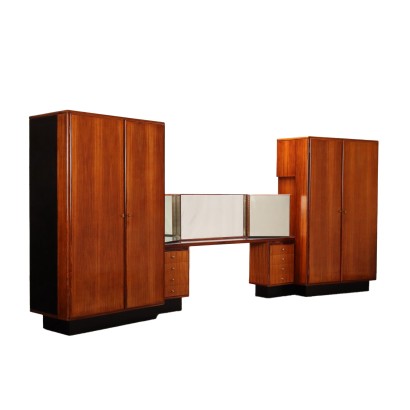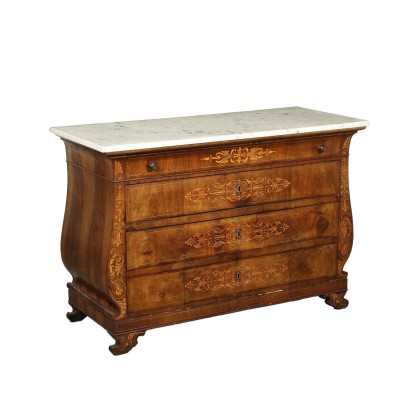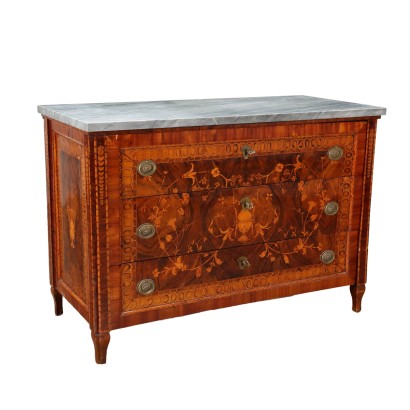Wardrobe Bourbon Restoration Attributable To Henry Thomas Peters Italy
Features
Style: Bourbon Restoration (1815-1830)
Age: 19th Century / 1801 - 1900
Origin: Liguria, Italy
Main essence: Chestnut , Mahogany , Walnut , Sessile Oak
Description
Antique wardrobe, The restoration can be attributed to Henry Thomas Peters, with a split front, it has three drawers surmounted by two doors in the central body, while in the side bodies there is a large door. High quality hardware, the the locks are opened by rotating the knobs placed in the centre of the large rose windows. In mahogany and mahogany feather, the interiors are in walnut, chestnut and sessile oak. In mahogany and mahogany feather, the doors and sides are adorned with diamond shaped and curled frames, in the centre of which elaborate rosettes are carved, in Palagian style, re-proposed with reduced dimensions even in the corners. Pelagio Palagi, a Bolognese architect, was in fact directly called by King Carlo Alberto to direct the modernization work of the Racconigi Castle. Under his guidance, Gabriele Capello known as Moncalvo and Henry Thomas Peters were also active for this order. For the occasion, Peters created three wardrobes for the bedroom of Queen Maria Theresa, of which there are the drawings by Palagi who, in an autographed memory of 1934, recalls the execution by the English cabinetmaker. The famous desk of the King is also attributed to Peters.
Product Condition:
The item shows signs of wear due to age. Any damage or loss is displayed as completely as possible in the pictures. It may require restoration and recovery of french polish. Product with a Certificate of Authenticity and Lawful Origin.
Dimensions (cm):
Height: 243,5
Width: 251,5
Depth: 68
With certificate of authenticity
Certificate issued by: Enrico Sala
Additional Information
Style: Bourbon Restoration (1815-1830)
Starting from the Congress of Vienna in 1815, the arts also expressed the return to the monarchical order and the desire for order after the war years.
The stylistic features are an evolution of the Empire style, but with simpler lines and stripped of the typical symbols of the Napoleonic period.
There is greater attention to the practicality of furniture and domestic use.
Find out more with the insights of our blog and FineArt on the Restoration style:
The return to the past in the Restoration period < / A>
Gueridon Restaurazione
Age: 19th Century / 1801 - 1900
19th Century / 1801 - 1900 Main essence:
Chestnut
It is a hard, yellow-white wood, mostly used for rustic furniture. Since the Middle Ages it has been used in Europe, mainly in Spain, France and Italy. Particularly resistant, it was sometimes used to manufacture the supporting structures of fine furniture. It tends to darken over time and has good resistance to woodworms.
Mahogany
It is one of the most precious and sought-after woods in cabinet making. It was discovered in Central America around 1600 and began to be imported to England in the 1700s. Much appreciated for its hardness and indestructibility, it became widespread following the blocking of walnut exports from France in 1720 and the consequent elimination of English import duties on mahogany from the colonies in America and India. The most valuable version comes from Cuba, but it became very expensive. At the end of the 18th century it began to be used also in France in Louis XVI, Directory and Empire furniture, its diffusion declined starting from when Napoleon, in 1810, forbade its import. It was generally used in the manufacture of elegant furniture, due to its characteristics and beautiful grain.
Walnut
Walnut wood comes from the plant whose botanical name is juglans regia , probably originally from the East but very common in Europe. Light or dark brown in color, it is a hard wood with a beautiful grain, widely used in antique furniture. It was the main essence in Italy throughout the Renaissance and later had a good diffusion in Europe, especially in England, until the advent of mahogany. It was used for solid wood furniture and sometimes carvings and inlays, its only big limitation is that it suffers a lot from woodworm. In France it was widely used more than anything else in the provinces. In the second half of the eighteenth century its use decreased significantly because mahogany and other exotic woods were preferred.
Sessile Oak
Under the name of oak or oak various types of woods derived from plants of the genus quercus are grouped. They are always resistant, hard and compact woods. Oak is lighter than oak, both are used for more rustic furniture or for the interiors of French and English antique furniture. In other processes it was gradually replaced by the advent of exotic woods considered more valuable since the 18th century. 


